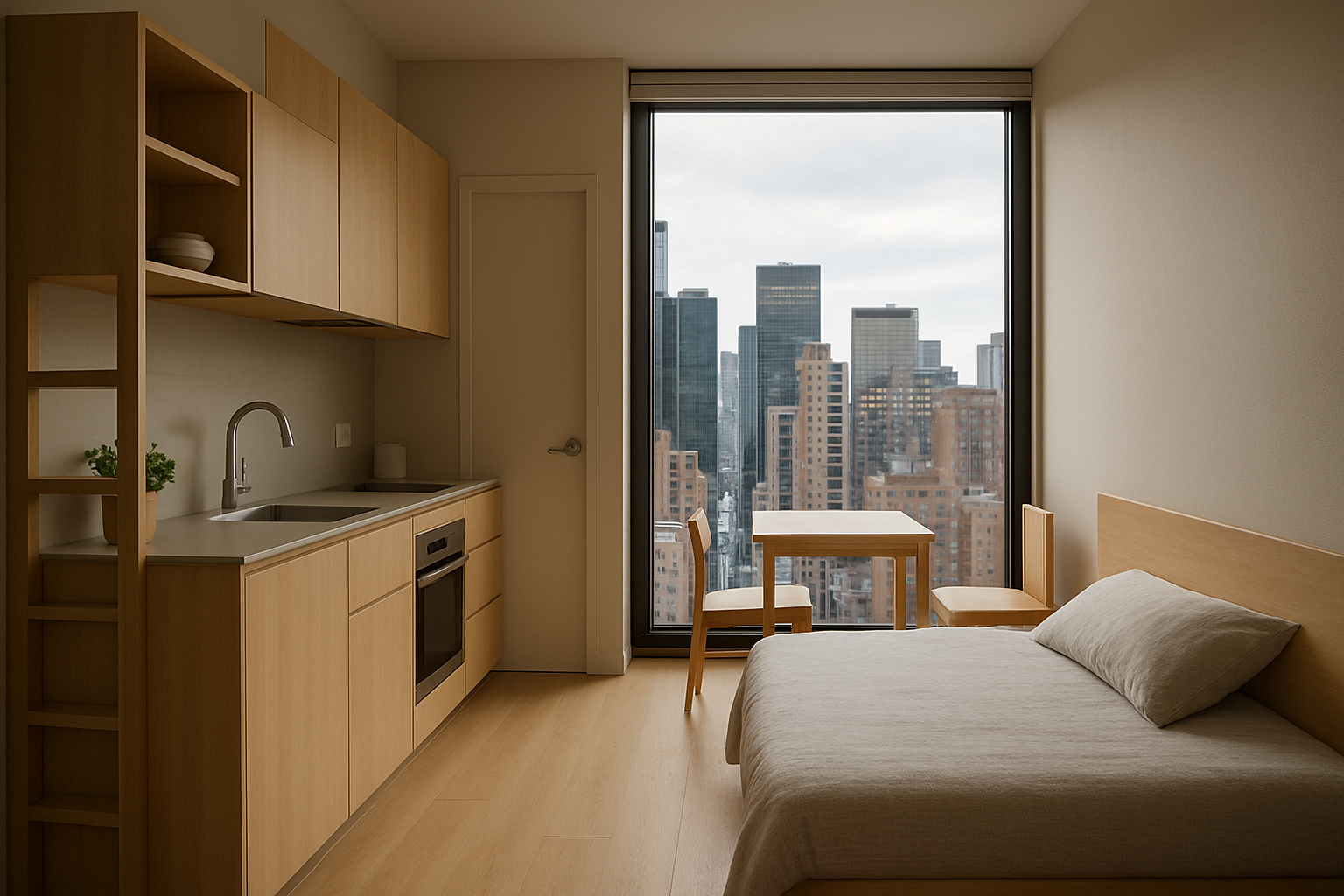Title: Microapartments: The Next Big Thing in Urban Real Estate
Imagine living in a space no larger than a hotel room, yet having all the comforts of home at your fingertips. This isn't a futuristic concept, but a growing trend in urban real estate: microapartments. As cities grapple with housing shortages and skyrocketing rents, these compact living spaces are emerging as a potential solution. In 2022, the average size of a microapartment in the U.S. was just 354 square feet, yet demand for these tiny abodes is on the rise, particularly among young professionals and urban dwellers seeking affordable housing in prime locations.

The 2008 financial crisis played a significant role in catalyzing this trend. As the housing market crashed and urban populations continued to grow, developers and city planners began exploring innovative ways to create affordable housing options in desirable locations. Microapartments emerged as a potential solution, offering a balance between affordability and prime urban positioning.
Understanding the Microapartment Model
Microapartments typically range from 200 to 400 square feet, though some can be as small as 150 square feet. Despite their diminutive size, these units are designed to be fully functional living spaces, often featuring clever storage solutions, multi-purpose furniture, and efficient layouts that maximize every square inch.
The key to microapartment living is the trade-off between personal space and location. Residents sacrifice square footage in exchange for affordability in desirable urban areas, often with access to shared amenities like gyms, lounges, and rooftop terraces. This model appeals particularly to young professionals, students, and those who prioritize experiences and location over spacious living quarters.
The Economics of Micro Living
From a financial perspective, microapartments present an intriguing proposition for both developers and renters. For developers, these units allow for higher density buildings, potentially increasing the return on investment per square foot of land. In some markets, microapartments can command higher per-square-foot rents than traditional apartments, though the total monthly rent is typically lower due to the smaller size.
For renters, microapartments offer an entry point into neighborhoods that might otherwise be unaffordable. In cities like San Francisco, where the median rent for a one-bedroom apartment exceeded $2,800 in 2023, a microapartment might rent for 20-30% less, making prime locations more accessible to a broader range of residents.
Design Innovations in Small-Scale Living
The success of microapartments hinges on innovative design. Architects and interior designers are pushing the boundaries of space efficiency, creating living areas that feel larger than their square footage suggests. Some common design features include:
-
Murphy beds that fold into the wall when not in use
-
Convertible furniture that serves multiple purposes
-
Floor-to-ceiling windows to maximize natural light
-
High ceilings to create a sense of openness
-
Built-in storage solutions that utilize vertical space
These design elements not only make microapartments more livable but also contribute to their appeal as a lifestyle choice rather than merely a compromise.
Regulatory Challenges and Urban Planning Implications
Despite their potential benefits, microapartments face regulatory hurdles in many cities. Minimum size requirements for residential units, parking regulations, and zoning laws often need to be revised to accommodate this housing model. Some cities, recognizing the potential of microapartments to address housing shortages, have begun to adapt their regulations.
For instance, New York City launched a pilot program in 2013 to test the viability of microapartments, temporarily waiving certain zoning regulations. The success of this program led to broader acceptance of micro-units in the city’s housing strategy.
The Environmental Angle: Sustainability in Small Spaces
Microapartments also align with growing environmental concerns and the push for sustainable urban development. Smaller living spaces generally consume less energy for heating, cooling, and lighting. The high-density nature of microapartment buildings can also contribute to more efficient land use and potentially reduce urban sprawl.
Moreover, the lifestyle associated with microapartment living often emphasizes minimalism and reduced consumption, which can have positive environmental implications. Residents may be more likely to use public transportation, bike, or walk, given the central urban locations of many microapartment developments.
Market Outlook and Future Trends
As urban populations continue to grow and housing affordability remains a pressing issue, the microapartment trend is likely to expand. Market analysts predict steady growth in this sector, with some forecasts suggesting a compound annual growth rate of over 7% for the micro-housing market through 2026.
However, the future of microapartments isn’t without challenges. Critics argue that these units may lead to overcrowding and potentially compromise quality of life. There are also concerns about the long-term livability of such small spaces and their impact on community dynamics.
Conclusion: A Small Solution to Big Urban Challenges
Microapartments represent a creative response to the complex challenges of urban housing. While not a panacea for all housing issues, they offer a viable option for certain demographics and contribute to the diversification of urban housing stock. As cities continue to evolve and adapt to changing demographics and economic realities, microapartments are likely to play an increasingly significant role in shaping the future of urban real estate.
The success of the microapartment model will depend on thoughtful design, supportive regulations, and a clear understanding of target markets. As this trend develops, it will be crucial for real estate professionals, urban planners, and policymakers to work together to ensure that microapartments contribute positively to urban environments and quality of life for residents.





